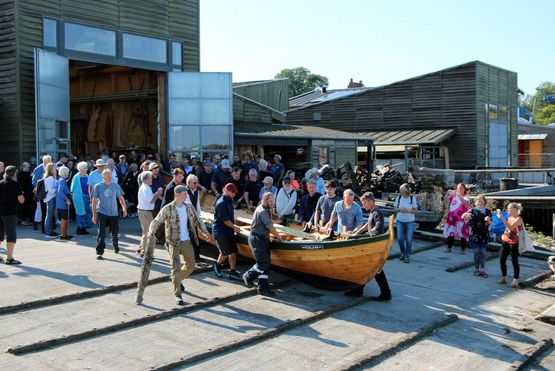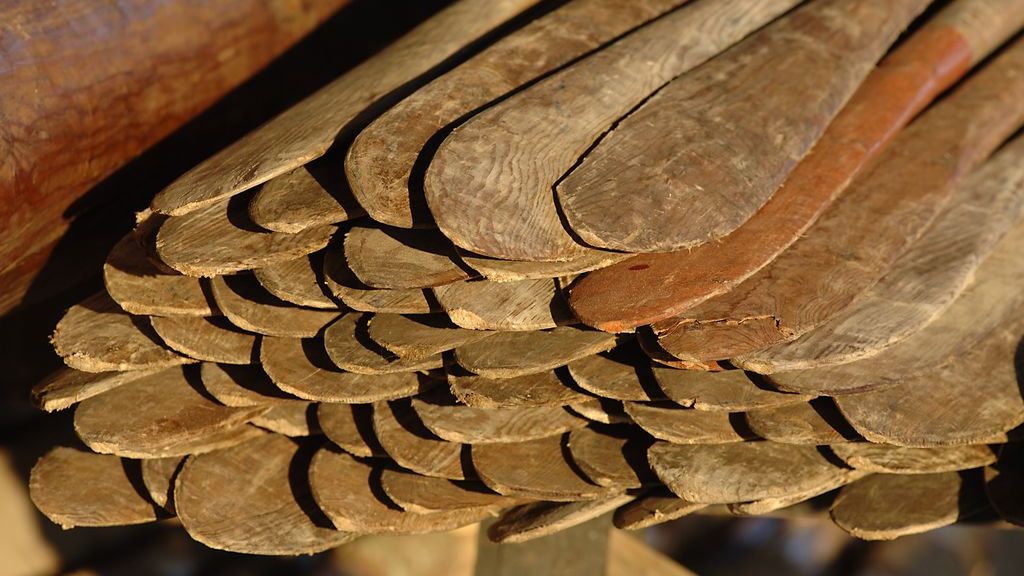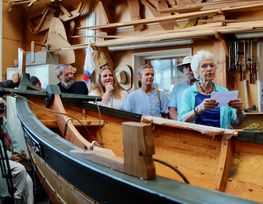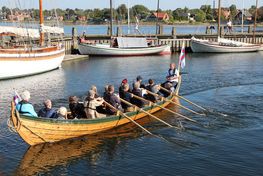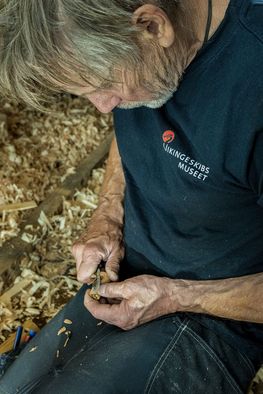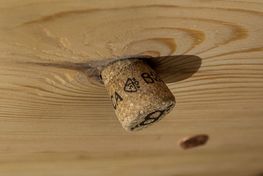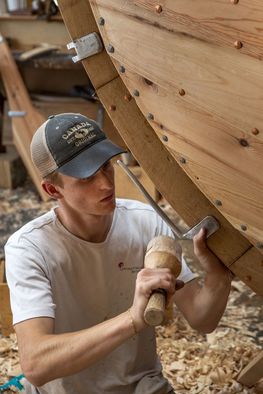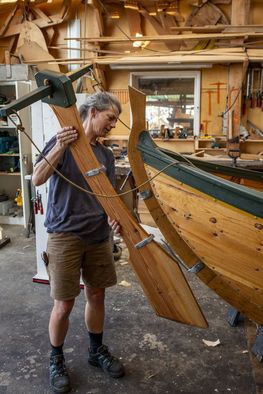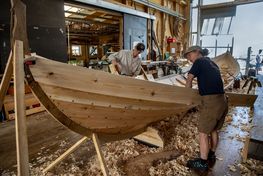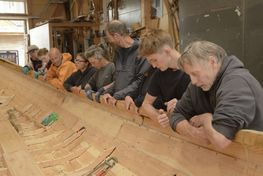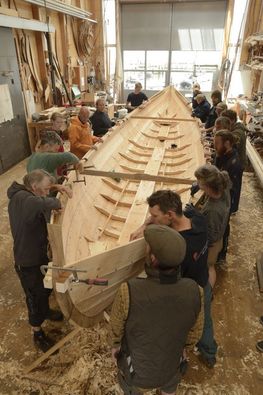The new Faroese boat is named Hjalmar, after the Faroese master boatbuilder Hjalmar Hátún, who nearly 50 years ago taught Viking Ship Museum boatbuilder Hanus Jensen how to build traditional clinker-built boats.
The boat's stems were raised with a stone at each end to stabilize the boat during construction, just as the old master boatbuilders in the Faroe Islands used to do.
The boat's halse (the first short planks that shape the boat's bow) were not steamed and bent but rather carved with an axe, just as was done on the oldest traditional Faroese boats.
In the holes left by the wood's knots, cork plugs were inserted—exactly as Hanus Jensen's mentor Hjalmar had done.
Traditional Builder from the Faroe Islands
The new Faroese boat was built under the supervision of traditional builder Hanus Jensen. He hails from the small island of Skúgvoy in the Faroe Islands and was apprenticed to master boatbuilder Hjalmar Hátún in the 1970s.
Jensen learned to build the traditional Faroese clinker-built boats by working side by side with Hjalmar. Hjalmar would work on one side of the boat, and Hanus, as the apprentice, would mimic everything on the other side. This form of boatbuilding was done entirely without blueprints. Together, they built a total of 24 boats in this manner over 2.5 years.
The new Faroese boat was built in the same way—without blueprints, but using precise measurements and boatbuilding traditions passed down from generation to generation of master boatbuilders.
Why does the Viking Ship Museum build Faroese Boats?
To most museum visitors, it is not immediately clear whether a Viking ship or a Faroese boat is being built, as the two types of boats are quite similar in appearance.
However, the Faroese boat is not a "Viking ship" because the boatbuilders are not trying to recreate an archaeological find from the Viking Age. Instead, they are building the boat according to ancient Faroese boatbuilding traditions.
In 2021, the Nordic clinker boat traditions were inscribed on UNESCO’s list of intangible cultural heritage. This shared Nordic heritage focuses on preserving the traditional maritime craftsmanship of clinker building, a boat construction method with roots in the Viking Age.
The Viking Ship Museum collaborates with several countries in the Nordic region to preserve, build, maintain, and sail traditional clinker-built wooden boats, as well as to pass on these skills to future generations.
Maritime Traditions Passed on to Schoolchildren
The new Faroese boat will be part of the Viking Ship Museum's sailing service and will be used especially when schoolchildren sail out on Roskilde Fjord with their classmates.
"Faroese boats are not Viking ships, but it's clear that they are related to the 1,000-year-old ships. We therefore call them a kind of descendants of Viking ships. The Viking Ship Museum builds traditional wooden boats that are not Viking ships because, as a museum, we are committed to keeping intangible cultural heritage alive. We do this best by building these traditional wooden boats and allowing, for example, schoolchildren to sail them," explains Martin Dael, head of the Viking Ship Museum's boatyard.
Faroese boats are ideal for schoolchildren’s sailing trips because they are built to be very stable, easy to row, and quick to set sail.
Boats reflect the Faroese landscape
Not long ago, Faroese boats were the most common means of transportation between the many islands of the Faroe Islands. The boats were used for visiting one another, traveling to the doctor, transporting oxen, sheep, and goods between islands, and, of course, for fishing and hunting at sea.
It was crucial that the boat was stable enough to allow boarding from a rocky coast in bad weather without capsizing, and light enough for the crew to haul it ashore and carry it over even very steep slopes.
The rocky island landscape, along with the North Atlantic winds and currents, have significantly influenced the design of Faroese boats.
The new boat is a Faroese Tíggjumannafar (a boat that can be rowed by 10 people):
Built by boatbuilders Hanus Jensen and Pernille Rosendahl, along with boatbuilding apprentice Oscar La Pia.
The boat will be used by the Viking Ship Museum's educational service in the new year.
Danish oak was used for the stems, keel, and oar wear strips.
Norwegian pine was used for the boat’s strakes (planks).
The boat is fastened with copper nails and sealed with wool from Danish sheep.
